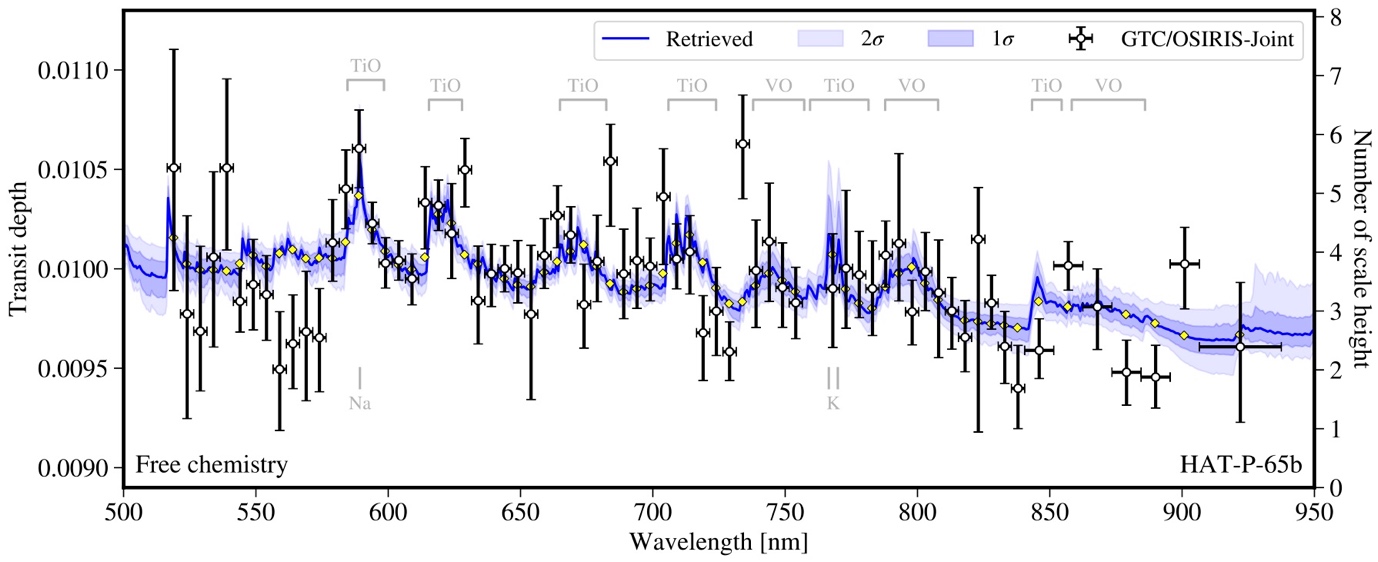Researchers Find Evidence for TiO in the Day-Night Terminator of a Hot Jupiter

Fig. 1 Observed transmission spectrum and posteriors of best-fit models for the hot Jupiter HAT-P-65b. (Image by CHEN Guo)
Recently, a paper led by Assoc. Prof. CHEN Guo from the Purple Mountain Observatory (PMO) of the Chinese Academy of Sciences reported evidence for TiO in the day-night terminator of a hot Jupiter. This Chinese-Spanish-German international team observed two transits of the hot Jupiter HAT-P-65b, when the planet moves in front of the star. This planet has a radius almost twice of our Jupiter, but only half of its mass. With an orbital period of around 2.6 days, its equilibrium temperature is as high as 1930K, indicating a dayside temperature on the lower limit to define an ultra-hot Jupiter. The observations were made by the 10.4 m Gran Telescopio Canarias (GTC) located in Spain. The acquired optical transmission spectra are consistent between the two transits. The spectral retrieval analyses revealed a cloud coverage of 36% at the day-night terminator. Strong evidence was found for TiO to present in the day-night terminator, and the TiO abundances measured in the two transits are consistent. Furthermore, Na and VO could be present as well, but only one of the two observations showed moderate evidence for them. This study shows that the mechanisms to account for the absence of TiO do not work in the case of HAT-P-65b. Future follow-up observations conducted with high-resolution Doppler spectroscopy will likely strongly improve our understanding of atmospheric circulation and thermal structures.

Fig. 2 Posteriors of TiO, VO, Na abundances in the atmosphere of HAT-P-65b from the spectral retrieval analyses. Reducing the lower prior limit would not change the posteriors of TiO. On the other hand, the posteriors of VO and Na would form a tail bound by the lower prior limit. (Image by CHEN Guo)
This paper was published in The Astrophysical Journal Letters on May 25.